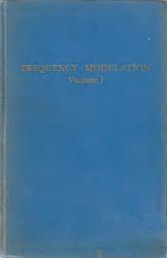THE XYZs OF USING A SCOPE Tektronix
THE XYZs OF USING A SCOPE Tektronix
THE XYZs OF USING A SCOPE Tektronix
You also want an ePaper? Increase the reach of your titles
YUMPU automatically turns print PDFs into web optimized ePapers that Google loves.
CHAPTER 5. ALL ABOUT PROBES PART I<br />
Connecting all the measurement<br />
test points you’ll need to<br />
the inputs of your oscilloscope is<br />
best done with a probe like the<br />
one illustrated in Figure 14.<br />
Though you could connect the<br />
scope and circuit-under-test<br />
with just a wire, this simplest of<br />
all possible connections would<br />
not let you realize the full<br />
capacities of your scope. The<br />
connection would probably load<br />
the circuit and the wire would<br />
act as an antenna and pick up<br />
stray signals- 60 Hz power,<br />
CBers, radio and tv stations -<br />
and these would be displayed<br />
on the screen along with the<br />
signal of interest.<br />
Circuit Loading<br />
Using a probe instead of a bare<br />
wire minimizes stray signals, but<br />
there’s still an effect from putting<br />
a probe in a circuit called circuit<br />
loading. Circuit loading modifies<br />
the environment of the signals<br />
in the circuit you want to<br />
measure; it changes the signals<br />
in the circuit-under-test, either a<br />
little or lot, depending on how<br />
great the loading is.<br />
Circuit loading is resistive,<br />
capacitive, and inductive. For<br />
signal frequencies under 5 kHz,<br />
the most important component<br />
of loading is resistance. To avoid<br />
significant circuit loading here,<br />
all you need is a probe with a<br />
resistance at least two orders of<br />
magnitude greater than the circuit<br />
impedance (100 Ma probes<br />
for 1 Ma sources; 1 MSZ probes<br />
for IO k0 sources, and so on).<br />
When you are making measurements<br />
on a circuit that contains<br />
high frequency signals, inductance<br />
and capacitance become<br />
important. You can’t avoid<br />
adding capacitance when you<br />
make connections, but you can<br />
avoid adding more capacitance<br />
than necessary.<br />
One way to do that is to use an<br />
attenuator probe; its design<br />
greatly reduces loading. Instead<br />
of loading the circuit with<br />
capacitance from the probe tip<br />
plus the cable plus the scope’s<br />
own input, the 10X attenuator<br />
probe introduces about ten<br />
times less capacitance, as little<br />
as IO-14 picofarads (pF). The<br />
penalty is the reduction in signal<br />
amplitude from the 1O:1<br />
attenuation.<br />
These probes are adjustable<br />
to compensate for variations in<br />
oscilloscope input capacitance<br />
and your scope has a reference<br />
signal available at the front<br />
panel. Making this adjustment is<br />
calledprobe compensation and<br />
you did it as the first step in<br />
Exercise 3 of Chapter 2.<br />
Remember when you are<br />
measuring high frequencies,<br />
that the probe’s impedance (resistance<br />
and reactance)<br />
changes with frequency. The<br />
probe’s specification sheet or<br />
manual will contain a chart like<br />
that in Figure 15 that shows this<br />
change. Another point to remember<br />
when making high frequency<br />
measurements is to be<br />
sure to securely ground your<br />
probe with as short a ground<br />
clip as possible. As a matter of<br />
fact, in some very high frequency<br />
applications a special<br />
socket is provided in the circuit<br />
and the probe is plugged into<br />
that.<br />
Measurement System<br />
Bandwidth<br />
Then there is one more probe<br />
characteristic to consider:<br />
bandwidth. Like scopes, probes<br />
have bandwidth limitations;<br />
each has a specified range<br />
within which it does not attenuate<br />
the signal’s amplitude<br />
more than -3 dB (0.707 of the<br />
original value). But don’t assume<br />
that a 60 MHz probe and a<br />
60 MHz scope give you a 60<br />
MHz measurement capability.<br />
The combination will approximately<br />
equal the square root of<br />
the sum of the squares of the<br />
rise times (also see Chapter 10).<br />
Figure 14.<br />
PROBES CONNECT<strong>THE</strong> <strong>SCOPE</strong> AND <strong>THE</strong> CIRCUIT-UNDER-TEST. <strong>Tektronix</strong> probes<br />
consist of a patented resistive cable and a grounded shield. Two P6120 probes and<br />
the accessories pictured above are supplied with every 2200 Series scope. The<br />
probe is a high impedance, minimum loading 1O X passive probe. The accessories<br />
for each probe (from left to right) are: a grabber tip for ICs and small diameter leads; a<br />
retractable hook tip; and IC tester tip cover; an insulating ground cover; marker<br />
bands; and (in the center) the ground lead.<br />
For example, if both probe and<br />
scope have rise times of 5.83<br />
nanoseconds:<br />
T r (system) = v Tr21scof3el + Tr2(probe)<br />
T,=d34+34<br />
That works out to 8.25<br />
nanoseconds, the equivalent to<br />
a bandwidth of 42.43 MHz because:<br />
B wlmegahertz) =<br />
350<br />
T r (nanoseconds)<br />
To get the full bandwidth from<br />
your scope, you need more<br />
bandwidth from the probe. Or<br />
you use the particular probe designed<br />
for that instrument. For<br />
example, in the case of the 2200<br />
Series scopes and the P6120<br />
10X Passive Probe, the probe<br />
and the scope have been designed<br />
to function together and<br />
you have the full 60 MHz bandwidth<br />
at the probe tip..<br />
17











